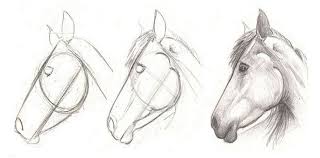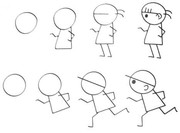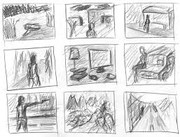But I Can't Draw!
You want to draw, but the idea of where to start is just overwhelming. You’re probably spending too much time worrying about it! A lot of the time artists worry too much about the outcome, always wanting to reach perfection. When really, to improve your skills you just need to observe and practice.
1. Practice Without Photos Keep it simple: Make your sketches from something actually in front of you. That means a real, still-life subject that’s sitting before you! This will help you to create a three-dimensional view onto a flat surface without the middleman (a photo). You can also move your angle, arrange the subject differently, and change your lighting...all artistic choices that can change your work.
2. Find a Focal Point Try a couple of quick sketches: These can help you determine what your eye and your brain find interesting about a subject right away. Was the angle unique? Did you find the negative space interesting? Was it something about the lighting? What was the relationship between your objects? Set up a basic still life with 3 to 5 objects (odd numbers give a more please balance). Include different objects with different heights and widths. Avoid flat objects! Set up a light so that it will shine at an angle across your objects to create interesting shadows. Walk around your still life and create 3-4 quick (30 seconds to 2 minutes) sketches from several different views. Capture the basic layout of your subject, not the detail. Squint if that helps you not see the details. Rearrange your objects and then do another series of 3-4 quick sketches. When you think you can’t do anymore, do another set! Often your answer will be found in the final group of sketches because you pushed past the obvious. Art is what’s beyond the obvious…or sometimes the obvious seen in new ways.
#3 Take a break: When you’re out sketching live subjects on the move give yourself a break. Get down on paper what you can by working quickly, but then take notes if your subject walks away. Tell yourself what you’re seeing. This focuses your brain to keep working.
#4 Everything has a gesture: It’s important to spend time really observing your subject, even if it is not moving. Gesture drawings warm up your eye-hand-brain connection and with practice gesture sketches of live subjects will soon be possible.
#5 Accept the messy Be accepting of messy: It doesn't matter what you are sketching. What matters is getting information down on the page, accepting that messy is part of the creative process, and that it is necessary. Send your internal critic packing while you get your creative work done.
#6 Look at values: Like shadows, value gives your subject depth and dimension. Value, more than anything, brings your drawings to life. Experiment with line and mark making that supports the values you see.
#7 Perfect Shmerfect: Change up your media and approach. Often artists practice the same approach over and over and do not try anything new. Let go of perfect! Don’t worry about accuracy, just get marks onto the paper. Remember that just when you think you’ve studied an object/subject completely you can always look a little deeper. Practicing a variety of drawing exercises with a variety of mediums will soon build up your momentum.
Now, go start sketching!
















.png)


